The Goldilocks of Electrified Cars
Goldilocks had three choices as do you when choosing between three Hyundai Ioniq models. You can buy a 2020 Hyundai Ioniq that uses gasoline and electric power, only electric, and one that uses gasoline and electric and comes with a plug. Unlike our fair maiden lost in the forest, you won’t go wrong with any of them.

The Hyundai Ioniq plug-in electric hybrid vehicle (PHEV) is one of seven hybrid or electric models sold by Hyundai, including one that makes electricity from hydrogen. Hyundai’s affirmation of electrified vehicles places them at the forefront of manufacturers that know exactly where the future of propulsion is headed.
Choices Are Always Good
The 2020 Ioniq PHEV powertrain combines a 1.6-liter, four-cylinder engine, delivering 104 horsepower and 109 pound-feet of torque. Add-in the 44.5-kilowatt electric motor that contributes 60 horsepower, and the total system makes 139 horsepower. When running in electric mode, the Ioniq PHEV can go up to 81 mph, and has near instant torque when needed anywhere in the powerband. The numbers play out like this:
- driving range in all-electric mode is 29 miles;
- 52 MPG in hybrid mode; and
- 119 MPGe. MPGe is a measurement of how far a car can travel electrically on the same amount of energy as is contained in one gallon of gasoline.

There are three drive modes of Sport, EV and the default Eco. We spent most of our time in Eco. In 286 miles of conservative driving (75-percent highway/25-percent city), using the smart cruise control when possible, we averaged 64.1 mpg. With a fully charged battery we were able to drive 31 miles on pure electricity, utilizing the dash gauges that displayed in real time our driving pattern, electricity use and battery status. Fuel economy numbers reported by Clean Fleet Report are non-scientific and represent the reviewer’s driving experience. Your results may differ.
The Ioniq PHEV has two other efficiency drive modes; the automatic and HEV (hybrid electric vehicle) selector is found on the center console. The automatic mode lets the computer select the best propulsion source, electricity or gasoline, to maximize efficiency. HEV places the car into hybrid mode, saving the battery charge. The battery will even recharge in the HEV mode.

Mated to Hyundai’s six-speed EcoShift dual clutch transmission (DCT), the Ioniq delivered smooth and efficient performance regardless of which propulsion source was being used. When in Sport mode, the paddle shifters can be used to shift gears, which is where the Ioniq PHEV can be fun to drive. Clean Fleet Report was impressed with the powertrain’s seamless operation in any drive mode, with the torque for highway on-ramp sprints, and passing big rigs, easy, available and effortless. Expect acceleration of about 8.9-seconds for 0-60 mph.
When driving, the 8.9-kilowatt-hour lithium-ion polymer battery is replenished through the regenerative charging system. This technology converts kinetic energy into electric energy and stores it in the battery when applying the brakes or coasting. This process can be viewed on a dash gauge where you can watch the power flow into and out of the battery and electric motor.
The paddle shifters mentioned earlier have a second, more important use on the Ioniq PHEV. When they are not shifting gears, they can be used to select the desired amount of battery regeneration. When using the paddles, the brakes are not engaged as the motor is used to slow the car. There are three different levels of regen–by pulling back on the left side paddle, increased regeneration slows the car more quickly. Pull on the right side paddle to reduce the regeneration. Once you become adept using the paddles, they can be used in many, if not most, cases when slowing or stopping instead of braking.

The Ioniq PHEV’s regenerative braking required little brake pedal modulation, imparting a confident feel. It’s part of the braking system of all-wheel anti-lock brakes with electronic brake-force distribution, brake assist, electronic stability and traction control; the Ioniq PHEV had solid, straight and true stops.
When parked, to get a full charge from empty it takes about 8.5 hours with a 120V (Level 1) outlet, or about 2.5 hours using a 240V (Level 2) charger. The Ioniq PHEV is not equipped with a DC Fast Charge, or Level 3, charge port. A helpful feature on the Ioniq PHEV are the settings for when you want to charge, and how much power you want to draw while charging. Going into Charge Management on the touchscreen, you can set the charge time in order to take advantage of lower rates, such as overnight. You can set the charging current to maximum, reduced or minimum. Opting for the latter settings will take a bit longer for the battery to reach a full charge, but the drain on the home system is less.
Out On the Road
The Ioniq PHEV is ideally used as an around town and commuter car. Longer trips are certainly within its capability, as the 11.9 gallon gas tank and the 52 mpg economy rating can take the Ioniq PHEV 590 miles down the road before needing to refuel or recharge.

Weighing in at 3,417 pounds, it has good manners on the highway and felt sturdy and planted to the road. Even Southern California’s grooved concrete freeways, which can cause cars to track with the grooves or feel every seam and patch, were not a problem. In town, the power steering is light for easy maneuvering, but gets a bit heavier on the freeway, which is the correct way steering should be designed. External noise is minimal, aided by the 0.24 coefficient of drag.
The Ioniq PHEV has adaptive cruise control where, when set, the car will slow and accelerate based on the vehicles in front of you. Something Hyundai doesn’t tout is this is really a semi-autonomous driving cruise control. The system will steer the car, for short periods, if you remove your hands from the wheel. You get a visual warning when the system is steering for too long, and then an audible warning. It worked very well, and was a convenient feature on long road trips.
Looks Like A Car

The Ioniq PHEV has smooth body surfaces, with few creases or sharp edges. It bucks the trend for electrified cars to be wedge shaped, and has a tasteful and stylish grille. The front LED daytime running lights, standard on the Limited trim, are positioned just below the LED headlights. The five spoke, 16-inch Eco-spoke aero alloy wheels were built to cut through the wind, and the Michelin 205/55R Energy Saver all-season tires were fuel-smart and quiet.
The hatch, with a built-in combination deck lid/spoiler, divides the glass and is bordered by LED tail lamps, which have a distinctive arrow/chevron shape when lit. It took some getting used to-looking in the rearview mirror and seeing the split rear window-but after some mental and visualization adjustments, it became normal and natural and was not an issue.
Interior Built for Comfort
The 2020 Hyundai Ioniq PHEV Limited’s interior was nicely appointed with the dash and doors outfitted with soft and hard plastic surfaces. The Ioniq PHEV uses recycled or ecologically-sensitive materials that are combined with powdered wood and volcanic stone to provide the same quality appearance of more commonly used, but less sustainable, materials. With a less reliance on oil-based products, some raw materials are extracted from sugarcane. Paint, with renewable ingredients, are extracted from soybean oil.
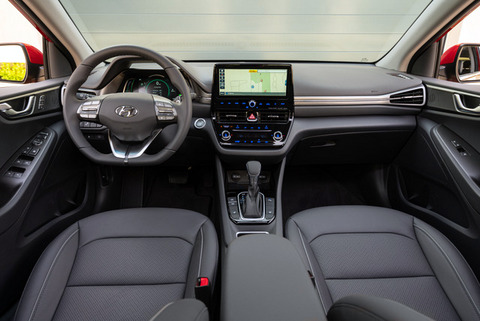
The stainless steel door sill plates were a nice touch as were the tasteful accents of brushed aluminum trim pieces and white piping on the black seats. The gauges and controls were conveniently located with a digital dash having several settings to read a wide assortment of data. The center console dividing the heated, leather seats (10-way power adjustable with memory for the driver and manual for the passenger) has a wireless phone charging pad, USB ports and a 120V outlet, all located behind the leather-wrapped gear shifter.
The rear seats, comfortable for two grown adults and three for short jaunts, were divided by a fold down armrest with cup holders. For anyone up to six-foot there was ample leg, shoulder and head room. The center console had floor-mounted rear vents but no USB ports.For storage, open the hatch and there is a deep area (plus a smaller under-floor compartment) to store luggage. With the rear seats folded 60/40, the cargo space is impressively large. For extra security there is a sliding luggage cover that is easily removable. The power tilt and slide sunroof, interior ambient lighting and the square bottom steering wheel, were appreciated standard features.
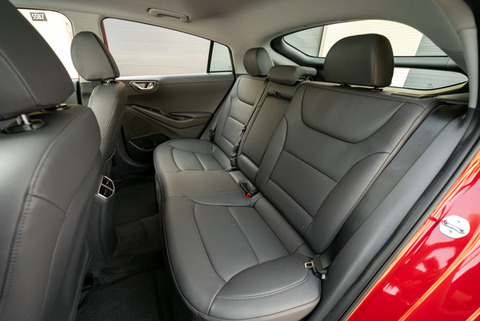
Clean Fleet Report’s Ioniq PHEV Limited came standard with a 10.25-inch color touchscreen, with navigation, as part of the infotainment system. Our car had the eight-speaker Harmon Kardon premium audio system with HD FM/AM, SiriusXM (90-day subscription included), Apple CarPlay and Android Auto, all of which can be managed by the controls on the leather-wrapped steering wheel. Other features of the system include Bluetooth for voice controls and hands-free telephone calling. The Hyundai Blue Link app, for connected car services, provides the option to remotely start and set the interior temperature, lock and unlock the doors, find your car and other features.
Convenience features include an auto-dimming rear view mirror with Homelink, dual automatic climate control, tilt and telescopic steering column, power windows with one-touch down, power door locks, power and heated foldaway exterior mirrors with turn signals. Other standard features are proximity key entry with approach lights, electronic parking brake, push button start, security alarm, a tire pressure monitoring system and a tire puncture repair kit that replaces a spare tire.
Safety Features
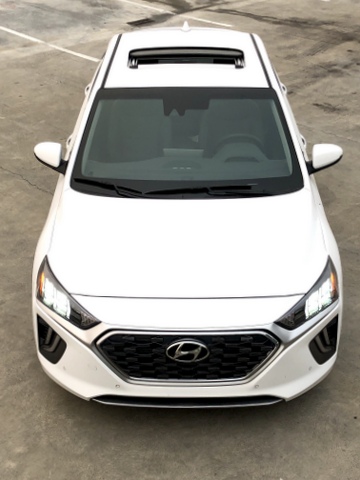
Safety features start with seven airbags and a rear view camera. These standard advanced driver safety systems (ADAS), will make driving your Ioniq PHEV just a bit safer.
- Blind spot detection with cross traffic collision avoidance assist
- Lane keep assist
- Lane following assist
- Forward collision avoidance with pedestrian detection
- Driver attention warning
- Front and rear parking sensors
- Adaptive cruise control with stop/go
The 2020 Hyundai Ioniq PHEV has not been rated by the National Highway Traffic Safety Administration, NHTSA, but has received an overall Good crashworthiness rating by the Insurance Institute for Highway Safety, IIHS.
Pricing and Warranties
Clean Fleet Report’s 2020 Hyundai Ioniq PHEV Limited had a MSRP of $34,340 that included the $955 inland freight and handling fee, and two options–Ceramic White exterior paint, $300, and the carpeted floor mats for $135.
The Ioniq PHEV comes with these warranties.
- New Vehicle – Five Years/60,000 miles
- Battery – 10 years/100,000 miles
- Hybrid Systems – 10 years/100,000 Miles
- Powertrain – 10 Years/100,000 miles
- Anti-Perforation – Seven Years/Unlimited Miles
- Roadside Assistance – Five Years/Unlimited Miles
Observations: 2020 Hyundai Ioniq PHEV Limited
The fear factor for people making the leap from a gasoline-powered car to an electric car is still the major hurdle for electrification acceptance. We still hear about running out of juice with no convenient place to plug-in, along with not wanting to believe that an electric vehicle is “right for me.†Fair enough on the surface, but here at Clean Fleet Report we firmly believe that most people can go about their everyday lives just fine with an all-electric car. If that is too much, the bridge is a car like the 2020 Hyundai Ioniq PHEV.

The Ioniq PHEV gets more than 50 mpg, can go at least 29 miles on pure electricity (which will easily satisfy most daily tasks), has a roomy interior, modern design and the best warranty in the business. It is easy to drive and comfortable to ride in, whether around town, commuting or taking a road trip and going almost 600 miles before needing to refuel. For reference, that is San Francisco to San Diego, with 100 miles left over to see the local sights or continue on to Mexico.
If you are dipping your toe into the electrified car world, the 2020 Hyundai Ioniq PHEV should be high on your shopping list. The Ioniq family of electrified cars gives you the option of one that uses no gasoline, or two that use a combination of gasoline and electricity. Goldilocks didn’t have it this good.
Before visiting your Hyundai dealer, make sure to call ahead for an appointment with a factory trained Ioniq PHEV specialist. Then treat yourself to a lengthy test drive and see for yourself how this plug-in hybrid could enhance your lifestyle.
Make sure to opt-in to the Clean Fleet Report newsletter (top right of page) to be notified of all new stories and vehicle reviews.
Whatever you end up buying, enjoy your new car and as always, Happy Driving!
Story by John Faulkner. Photos by John Faulkner and Hyundai.
Related Stories You Might Enjoy—The PHEV Options
Road Test: 2020 Kia Niro PHEV
Road Test: 2020 BMW X3 xDrive30e PHEV
Personal: To PHEV or Not Is the Question
Flash Drive: 2021 Toyota RAV4 Prime PHEV
News: Ford Releases Details on Plug-in Hybrid Escape
Road Test: 2020 Toyota Prius Prime PHEV
Road Test: 2020 Volvo S60 PHEV
Road Test: 2019 Honda Clarity PHEV
Road Test: 2019 Chrysler Pacifica Hybrid
Road Test: 2019 Subaru Crosstrek PHEV
Road Test: 2019 Mitsubishi Outlander PHEV
Disclosure:
Clean Fleet Report is loaned free test vehicles from automakers to evaluate, typically for a week at a time. Our road tests are based on this one-week drive of a new vehicle. Because of this we don’t address issues such as long-term reliability or total cost of ownership. In addition, we are often invited to manufacturer events highlighting new vehicles or technology. As part of these events we may be offered free transportation, lodging or meals. We do our best to present our unvarnished evaluations of vehicles and news irrespective of these inducements.
Our focus is on vehicles that offer the best fuel economy in their class, which leads us to emphasize electric cars, plug-in hybrids, hybrids and diesels. We also feature those efficient gas-powered vehicles that are among the top mpg vehicles in their class. In addition, we aim to offer reviews and news on advanced technology and the alternative fuel vehicle market. We welcome any feedback from vehicle owners and are dedicated to providing a forum for alternative viewpoints. Please let us know your views at publisher@cleanfleetreport.com.

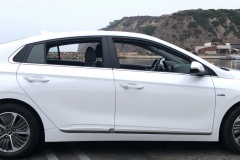





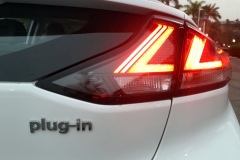
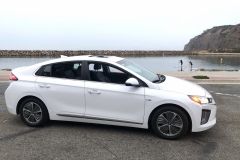
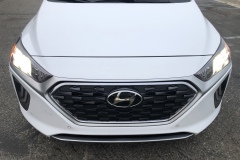
4 thoughts on “Road Test: 2020 Hyundai Ioniq Plug-In Hybrid (PHEV) Limited”